Looking to grow your health savings account (HSA)? Fidelity offers a wide range of investment options to help you make the most of your money.
Whether you have a Fidelity HSA or use another provider, you can likely access Fidelity’s mutual funds through your account. With a strong track record in both active and index fund management, Fidelity provides a solid foundation for building your HSA portfolio.
Today, I’d like to show you several of the best Fidelity retirement funds you might be able to invest in through your HSA plan. Most of the funds listed here were chosen for their tax-inefficiency—something that you can effectively counter by holding them in an HSA or another tax-advantaged account. Indeed, these funds make sense not just for HSAs, but also IRAs and (when available) 401(k)s.
Disclaimer: This article does not constitute individualized investment advice. These securities appear for your consideration and not as personalized investment recommendations. Act at your own discretion.
Editor’s Note: Tabular data is up-to-date as of Oct. 15, 2024.
Table of Contents
Can You Invest Through Your HSA?

Health savings accounts (HSAs) can best be described as part cash account, part investment account. While the money is primarily intended to be spent on qualified medical expenses, you can invest some or all of it—and many people (myself included) do.
While many HSA providers offer several investment options, you’ll often need to meet a minimum balance in your HSA before you can start investing. For instance, some HSA administrators might require you to have at least $2,500 in your cash account before you can invest; but some accounts don’t have this requirement.
How to Invest in Your HSA
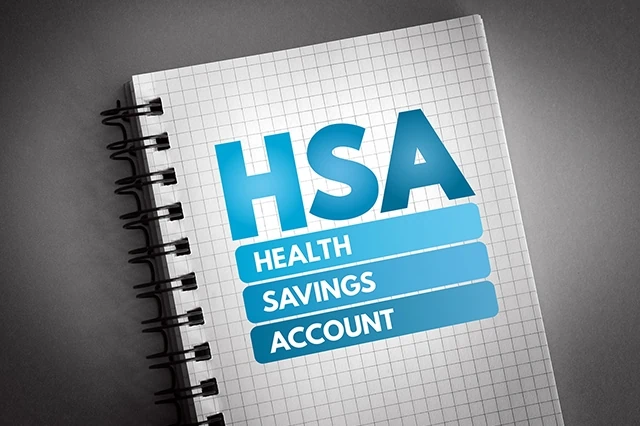
As far as how to invest is concerned, that’s largely dependent on the investments your HSA provider offers, which can vary widely. (We’ll cover our top Fidelity retirement picks for your HSA account momentarily.)
Some HSAs are self-directed and let you choose from thousands of stocks, bonds, exchange-traded funds (ETFs), and mutual funds. In that case, how you invest is just about the same as how you’d invest in a traditional brokerage account or individual retirement account (IRA).
However, other HSAs might require you to choose from a very limited set of mutual funds or ETFs. Even then, the process is pretty simple—just select which fund or funds you want to purchase with your available funds.
If you have a high-deductible health care plan (HDHP) and are eligible for an HSA, research different HSA providers and their investment choices to determine which investments are available to you.
What Should You Want in a Retirement Fund?

When investing your retirement savings, you need to consider a few critical factors.
To start, a robust retirement portfolio should provide diversification across various asset classes. This typically means stocks and bonds, though it can also mean alternative asset classes such as real estate or commodities. Diversifying your retirement portfolio across these asset classes can help defray your risk and smooth your returns.
Costs matter too. Every dollar spent on fees and expenses is a dollar no longer available to grow and compound over time, so keeping expenses cut to the bone is vital. Good news there: The best Fidelity retirement funds will generally have some of the lowest fees and expenses in the business.
And don’t forget taxes. A taxable account, like a standard brokerage account, is better suited to take advantage of certain tax-advantaged investments, such as municipal bonds. For tax-advantaged accounts, such as HSAs, some of the best investments include bond funds and actively managed stock funds. (I’ll explain why when we get to those funds.)
Finally, you ideally want your retirement portfolio to produce regular dividend income. Stocks can regularly experience nasty corrections and bear markets, but a good income fund can provide for your living expenses without forcing you to sell at an inopportune time.
Related: The 7 Best Dividend ETFs [Get Income + Diversify]
Why Fidelity?
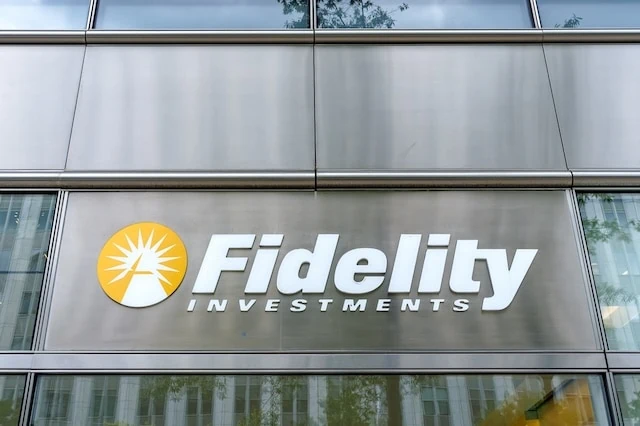
Fidelity is a leader in mutual funds (and ETFs, for that matter) and has been a force in the industry since the launch of its Fidelity Puritan Fund (FPURX) back in 1947.
Today, this premier mutual fund company has more than $12.4 trillion in assets under administration thanks to many successes over the intervening years. That includes star money managers such as Peter Lynch, the long-time manager of the Fidelity Magellan Fund (FMAGX) who averaged an incredible 29.2% per year between 1977 and 1990.
However, while Fidelity first built its name on actively managed funds, over the past three decades, the firm has built out its low-cost and even no-cost index funds as part of the movement to reduce expense ratios and transaction costs for individual investors.
The end result is a fund lineup that can serve just about every need, and that’s typically competitive on price.
The Best Fidelity Retirement Funds for an HSA in 2024
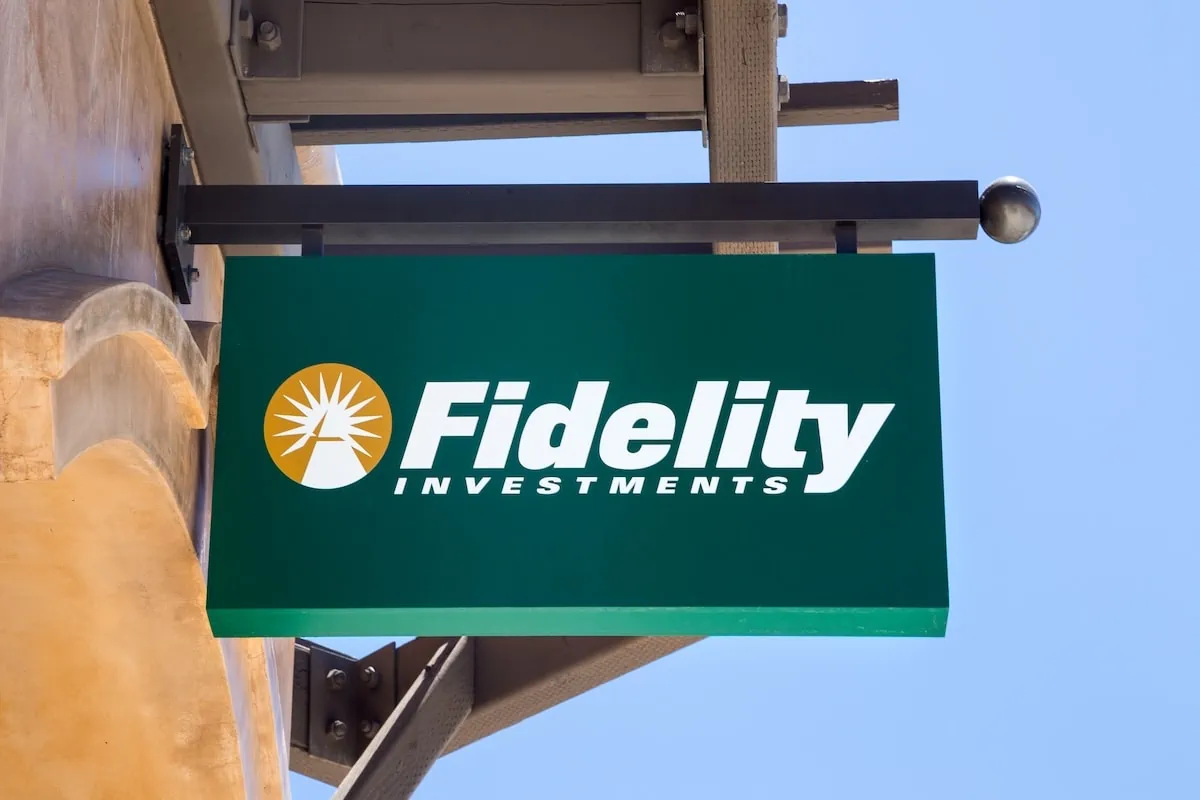
With all that out of the way, let’s dig into some of the best Fidelity retirement funds to hold in an HSA to consider diving into this year.
I’m splitting this list into needs for two types of investors:
1. People treating their HSA as a second IRA. They’re looking for some long-term growth, and they’re willing to accept some—not a lot, but some—risk.
2. People who just want to earn a little money on their health savings. These people plan on using their HSA for health-related expenses, but would like to make at least a little money while those funds are just sitting around.
Related: The 7 Best Vanguard ETFs for 2024 [Build a Low-Cost Portfolio]
Also note that each fund here comes with a Morningstar Portfolio Risk Score, which measures the risk presented by a managed investment’s (fund’s) portfolio. The higher the score, the higher the risk. Morningstar groups the scores as such: 0-23 is conservative, 24-47 is moderate, 48-78 is aggressive, 79-99 is very aggressive, and 100 and above is extreme.
We’ll start with the riskiest funds and work our way down to the most conservative.
HSA-as-an-IRA Fund #1: Fidelity Trend Fund
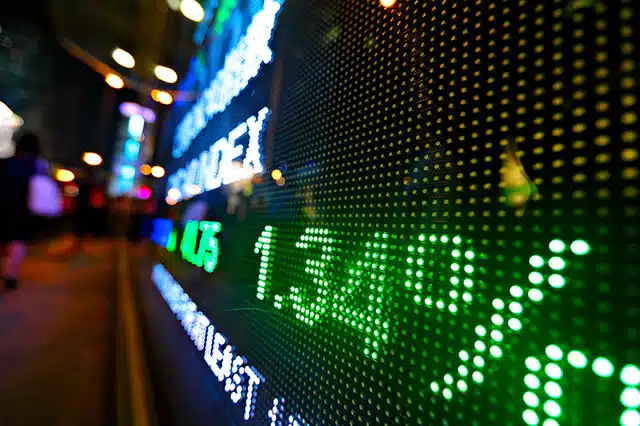
— Style: U.S. large-cap growth
— Assets under management: $3.7 billion
— Expense ratio: 0.49%, or $4.90 per year for every $1,000 invested
— Dividend yield: 0.0%
— Minimum initial investment: None
— Morningstar Portfolio Risk Score: 77 (Aggressive)
An old Wall Street maxim says “you never go broke taking a profit.” There is a lot of wisdom in that quote. As a general rule, buying and holding good stocks or good funds and allowing them to compound over years or even decades is the way to go. But having at least part of your portfolio in actively traded strategies can also make sense, particularly in bear markets. Actively traded strategies have their stretches when they outperform passive index strategies, and they can potentially help you to avoid major declines.
Unfortunately, active trading strategies are also woefully tax-inefficient, particularly if your holding period is less than a year. Short-term capital gains are taxed as ordinary income, meaning you could be sharing up to 37% of your gains with Uncle Sam.
Related: The 7 Best Fidelity Index Funds for Beginners
So, it makes sense to hold funds that do a lot of active trading in a tax-deferred retirement account. There is no precise, universally accepted threshold for what constitutes “a lot” of active trading, but I would consider any fund with portfolio turnover (how much of the portfolio’s holdings are turned over, or replaced, in a given year) over 30% or so to be fairly tax-inefficient. The higher that number goes, the more inefficient the fund.
As an example, let’s look at the Fidelity Trend Fund (FTRNX). This is a fairly aggressive fund that focuses on companies the manager believes have above-average growth potential. FTRNX is tech-heavy and has beaten its Morningstar Category average over every meaningful time period.
But this high performance comes at the cost of a lot of active trading; the annual portfolio turnover is about 50%. In a taxable account, that’s a large potential tax liability. Thus, FTRNX is exactly the kind of actively managed fund best held in a tax-advantaged account like an HSA.
Related: 11 Best Stock Screeners & Stock Scanners
HSA-as-an-IRA Fund #2: Fidelity 500 Index Fund

— Style: U.S. large-cap blend
— Assets under management: $599.4 billion
— Expense ratio: 0.015%, or 15¢ per year for every $1,000 invested
— Dividend yield: 1.3%
— Minimum initial investment: None
— Morningstar Portfolio Risk Score: 71 (Aggressive)
As a long-term wealth builder, it’s really hard to beat the S&P 500. It’s rare to find an actively managed mutual fund that can consistently beat the S&P 500 over time, particularly after considering fees and expenses.
Related: 5 Best Vanguard Retirement Funds [Start Saving in 2024]
Thing is, turnover in S&P 500 index funds tends to be low at just a couple percent in any given year. That makes them an extraordinarily tax-efficient way to invest, as they generate very little in taxable capital gains—making them a much better fit for a taxable account than a tax-advantaged one. However, if you’re simply using an HSA like a second IRA, and performance is your ultimate goal, stashing an S&P 500 index fund like the Fidelity 500 Index Fund (FXAIX) in your HSA is still one of the absolute smartest moves you can make.
If you believe in the American growth story, then buying a basket of America’s biggest and most recognized companies makes sense. Even Warren Buffett, the Oracle of Omaha himself—considered by many to be the greatest investor in history—has said on multiple occasions that most investors, most of the time, should simply buy and hold an S&P 500 index fund and let it run.
The Fidelity 500 Index Fund has an almost nonexistent expense ratio of just 0.015%, which is just about impossible to beat. That has helped it draw an incredible $599 billion in assets under management.
Related: 12 Best Long-Term Stocks to Buy and Hold Forever
HSA-as-an-IRA Fund #3: Fidelity Contrafund

— Style: U.S. large-cap growth
— Assets under management: $149.1 billion
— Expense ratio: 0.39%, or $3.90 per year for every $1,000 invested
— Dividend yield: 0.4%
— Minimum initial investment: None
— Morningstar Portfolio Risk Score: 69 (Aggressive)
If you are new to investing in equity mutual funds, you are in good hands with Fidelity Contrafund (FCNTX) manager Will Danoff. He’s one of the most successful equity fund managers in history and has been running FCNTX for three decades, helping to build it into one of the largest mutual funds in the world.
Contrafund has a simple mandate—capital appreciation (in other words, price gains)—and the fund is anything if not flexible. It can pursue value stocks, growth stocks, or any combination of the two.
Given Contrafund’s size, it generally has to concentrate in large-cap stocks. Its biggest holding is Facebook parent Meta Platforms (META), which makes up more than 12% of its portfolio. Warren Buffett’s Berkshire Hathaway (BRK.B), Microsoft (MSFT) and Amazon.com (AMZN) are also large positions at between 6% and 9% each.
Related: The 7 Best Fidelity Index Funds for Beginners
In most years, Contrafund’s returns won’t deviate all that much from the S&P 500’s returns, and over the past decade, the fund’s annualized returns have been almost identical to the S&P 500. But in 2000, 2001 and 2002—a bear market that, similar to our most recent one, centered around technology and growth stocks—the S&P was down 9.0%, 11.9%, and 22.0%, respectively. Contrafund lost a good deal less over that three-year stretch at 6.8%, 12.6%, and 9.6%, respectively.
The fund struggled in 2022, but then, in a bear market, virtually all equity funds take damage. It’s the price we pay for getting access to the upside of a bull market. Remember: A skilled manager can really earn their keep during difficult markets by minimizing those losses while still positioning the portfolio to benefit when the market comes roaring back; indeed, Danoff managed to beat his category average in 2022, then did so again in 2023, posting 39% returns to top the category and sprint past the S&P 500.
Most importantly: Danoff has managed to beat the category across every meaningful time period. So while FCNTX isn’t extremely tax-inefficient—turnover is about 25%—it still makes sense to hold in a tax-advantaged account if you’re prioritizing performance.
Related: The 7 Best Vanguard ETFs for 2024 [Build a Low-Cost Portfolio]
HSA-as-an-IRA Fund #4: Fidelity Target-Date Funds

— Style: Target-date
— Expense ratio: Fidelity Freedom Funds: 0.47%-0.75%, or $4.70-$7.50 per year for every $1,000 invested; Fidelity Freedom Index Funds: 0.12%, or $1.20 per year for every $1,000 invested; Fidelity Freedom Blend Funds: 0.41%-0.49%, or $4.10-$4.90 per year for every $1,000 invested; Fidelity Freedom Sustainable Target Date Funds: 0.41%-0.49%, or $4.10-$4.90 per year for every $1,000 invested
— Minimum initial investment: None
— Morningstar Portfolio Risk Score: 15-62 (Conservative-Aggressive)
One of the issues in building an appropriate allocation allocation is that your ideal mix of stock and bond funds will evolve over time based on your age and stage of life. An ideal portfolio for a 20-year-old is likely going to be very different from that of a 40-year-old, and both those portfolios will be different from what’s ideal for a 60-year-old.
Like Young and the Invested’s content? Be sure to follow us.
This is where a target-date fund can really be a lifesaver. A target-date fund—also called a life-cycle fund—is a type of mutual fund that is designed to change its asset allocation over time.
The typical target-date fund is an actively managed fund—one that will start out with a heavy allocation to stocks and then slowly transition to a heavier allocation to bonds as it approaches its target retirement date, following a glide path.
The target retirement date is intended to be a rough estimate and doesn’t need to be precise. You’re generally not going to know the precise year you plan to retire decades in advance. Fidelity, like most mutual fund families, creates its target-date funds in five-year increments of target retirement date (say, 2025, 2030, 2035, etc.).
While target-date funds are most commonly found in 401(k) plans, they’re designed specifically for retirement, making them a logical fit for people using their HSAs as a second IRA, too.
Related: 7 Best Schwab ETFs to Buy [Build Your Core for Cheap]
Fidelity actually boasts four different lineups of target-date funds:
— Fidelity Freedom Funds: These hold a collection of actively managed Fidelity funds.
— Fidelity Freedom Index Funds: These hold a collection of indexed Fidelity funds.
— Fidelity Freedom Blend Funds: These hold a combination of actively managed and indexed Fidelity funds.
— Fidelity Sustainable Target Date Funds: These hold a combination of actively managed and indexed Fidelity funds that invest in assets with positive environmental, social, and governance characteristics.
While the more aggressive Fidelity target-date funds are more than suitable for those using an HSA as an IRA, funds with earlier target dates (and the income-focused option in each target-date lineup) are much heavier in bonds, making them good conservative options if your goal is just to earn a little money on your health savings. You can read more about them in our primer on Fidelity target-date funds.
Related: 7 Best Fidelity ETFs for 2024 [Invest Tactically]
Earn Money on Health Savings Fund #1: Fidelity Real Estate Income Fund

— Style: U.S. REIT
— Assets under management: $5.0 billion
— Expense ratio: 0.73%, or $7.30 per year for every $1,000 invested
— SEC yield: 5.3%*
— Minimum initial investment: None
— Morningstar Portfolio Risk Score: 31 (Moderate)
Real estate has been a preferred asset class since the dawn of human civilization. And today, real estate investment trusts (REITs) offer the potential for both high yield and respectable capital gains.
REITs enjoy a special tax status that allows them to avoid corporate taxation so long as they distribute at least 90% of their net profits as dividends. Because of this tax incentive, REITs tend to be one of the highest-yielding sectors and a perennial favorite among income investors.
Related: Best Fidelity Retirement Funds for a 401(k) Plan
Unfortunately, this also makes REITs very tax-inefficient, as a large percentage of the total return comes from taxable dividends. What’s more, REIT dividends are generally not classified as “qualified dividends.” Qualified dividends are taxed at the long-term capital gains rate (0%, 15% or 20% depending on your tax bracket). Non-qualified dividends are taxed as ordinary income, like bond interest, and can face rates as high as 37%, depending on your bracket. Thus, it makes more sense to hold REITs and REIT funds in a tax-advantaged fund like an HSA rather than a taxable brokerage account.
If you’re looking for a good contender, the Fidelity Real Estate Income Fund (FRIFX) is a solid option. The fund holds a collection of common stock of U.S. REITs such as American Tower (AMT), Equity LifeStyle Properties (ELS), and Prologis (PLD); debt securities of real estate entities; and commercial and other mortgage-backed securities.
FRIFX pays a current yield between 5-6%, making it a very competitive income option—even in a high-yield environment like today.
* SEC yield reflects the interest earned across the most recent 30-day period. This is a standard measure for funds holding bonds and preferred stocks.
Related: The 7 Best Dividend ETFs [Get Income + Diversify]
Earn Money on Health Savings Fund #2: Fidelity Total Bond Fund

— Style: U.S. intermediate bond
— Assets under management: $41.0 billion
— Expense ratio: 0.45%, or $4.50 per year for every $1,000 invested
— SEC yield: 4.8%
— Minimum initial investment: None
— Morningstar Portfolio Risk Score: 19 (Conservative)
Bonds should be a core holding of just about any portfolio. They also happen to be one of the most tax-inefficient asset classes on earth because the bulk of their returns will generally come from interest paid, and interest income is taxed as ordinary income. If you’re in the 37% tax bracket, then you’re losing 37% of your bond interest to taxes.
For this reason, it will virtually always make sense to hold bond funds in an HSA, IRA, 401(k), or other tax-deferred account.
Like Young and the Invested’s content? Be sure to follow us.
Fidelity Total Bond Fund (FTBFX) is a broad bond-market fund that allocates its assets across a wide variety of bonds and other income-producing debt. While it tends to gravitate toward investment-grade debt, the fund is allowed to invest up to 20% of assets in bonds rated below investment-grade, which potentially offer higher returns in exchange for accepting slightly higher risk. (Sub-investment-grade bonds are also referred to as high-yield debt securities or junk bonds.)
Currently, 35% of the portfolio is invested in corporate bonds, while 30% is invested in U.S. government debt. Most of the rest is invested in mortgage bonds or other mortgage-backed securities (MBSes). And right now, 85% of the portfolio is investment-grade, so the fund isn’t even using its full allowable allotment to junk bonds.
Related: 5 Best Vanguard Retirement Funds [Start Saving in 2024]
One of the most critical metrics to consider when considering bond funds is duration, which is a measure of interest-rate sensitivity. As an example, a bond with a duration of two would see its price rise by 2% if interest rates fell by 1% (or conversely, would see its price fall by 2% if interest rates rose by 1%). The actual calculation of duration is fairly complex; it’s the weighted average of the bond’s cash flows. But the key takeaway is that, all else equal, the longer a bond’s time to maturity, the higher its duration—and thus the higher the interest-rate risk.
FTBFX has a duration of just more than 6 years; thus, the fund has moderately high interest-rate risk. A rise in interest rates of 1% would mean a price decline of about 6%. But remember: This cuts both ways. A fall in interest rates could mean significant capital gains.
Related: 11 Best Brokerage Account Bonuses, Promotions + Deals
Earn Money on Health Savings Fund #3: Fidelity Sustainable Low Duration Bond Fund

— Style: U.S. ultra short-term bond
— Assets under management: $29.1 million
— Expense ratio: 0.30%, or $3.00 per year for every $1,000 invested
— SEC yield: 4.7%
— Minimum initial investment: None
— Morningstar Portfolio Risk Score: N/A**
With the yield curve inverted as it is today, meaning that short-term rates are higher than long-term rates, it makes sense to keep a good chunk of your overall bond exposure in short-term bond funds. And one strong contender here is the Fidelity Sustainable Low Duration Bond Fund (FAPGX).
Apart from its attractive 4.7% yield, FAPGX is a fund you can feel good owning. It will normally invest at least 80% of its assets in investment-grade debt securities that Fidelity believes have positive environmental, social, and governance (ESG) benefits. Roughly 60% of the fund is invested in corporate debt; another 30% is invested in U.S. Treasury securities, and most of the rest is invested in asset-backed securities (ABSes).
Most importantly, FAPGX has a duration of just 0.55 years, which means it is all but immune to the effects of interest-rate fluctuations.
** FAPGX does not have a Morningstar Portfolio Risk Score. However, given the makeup of the portfolio, you can consider it to be extremely conservative—certainly more conservative than any other fund on this list.
Related: 5 Best Fidelity Retirement Funds [Low-Cost + Long-Term]
How Does Your Portfolio Look? Ask Empower

More than 3 million users are putting their retirement on track by putting Empower’s tools and/or advisory services to work for them.
Wondering how your portfolio is shaping up? Sign up with Empower to use its free Investment Checkup tool, which can help you assess your portfolio risk, analyze past performance, and get a target allocation for your portfolio. You can even compare your portfolio to both the S&P 500 and Empower’s “Smart Weighting” Recommendation.
And if you want a fuller advisory experience? Empower’s full-service Wealth Management account pairs the firm’s tools with skilled human management. Empower will create a recommended portfolio spanning six asset classes, then help you implement your plans by giving you access to financial advisors who can guide you through retirement planning, college savings, workplace stock options, and more.
Regardless of how much money you bring to the table, if you sign up, you will be given the option to schedule an initial 30-minute financial consultation with an Empower advisor.
Want to learn more about investing, spending, taxes, and more? Sign up for Young and the Invested’s free newsletter: The Weekend Tea.
Is Investing Health Savings Account Funds a Good Idea?

Yes, it can be a good idea to invest the funds in your health savings account—after all, investing is generally the best way to grow wealth over time. But you should also keep at least a portion of your HSA balance saved as cash so you can still easily spend it if you need it.
For instance, I typically keep my estimated annual out-of-pocket expenses in the savings portion of my HSA and invest the remaining balance for long-term needs, such as medical expenses in retirement. This gives me added peace of mind that the money is available if we can’t afford to cover unexpected health care costs with our normal checking account.
Related: How to Get Free Stocks for Signing Up: 7 Apps w/Free Shares
Why You Should Invest Your HSA Funds

Some people just aren’t in a financial position where they can invest their HSA funds. But if you are, there are oh-so-many reasons to put at least some of that HSA money to work.
Related: 9 Monthly Dividend Stocks for Frequent, Regular Income
1. Triple Tax Advantage
HSAs offer an impressive trifecta of potential tax benefits, including:
— Pre-tax contributions: Contributions to an HSA made via payroll deduction are pre-tax. Any contributions you make on your own (not via payroll deduction) may be 100% tax-deductible.
— Tax-free investment growth: Your HSA investment earnings and interest earned on the savings portion aren’t subject to taxes either.
— Tax-free withdrawals for qualified medical expenses: If you withdraw HSA dollars for a qualified medical expense, you won’t be taxed on the withdrawal.
You will pay income taxes and a 20% penalty on withdrawals for non-qualified costs before age 65. However, after age 65, while you’ll still have to pay ordinary income tax on non-qualified withdrawals, you’ll no longer have to pay any penalties.
2. Long-Term Growth
Chances are your health care expenses will probably rise as you age. If you have a high-deductible health plan and start investing in an HSA early, you can build a sizable nest egg for medical costs (or other expenses) in retirement. This will provide some assurance that your future health care costs will be covered even if they grow more expensive when you’re older.
Related: 12 Best Long-Term Stocks to Buy and Hold Forever
3. Investment Options
Similar to what you’d see with a taxable brokerage account, HSAs sometimes offer numerous investment options, including individual stocks, bonds, certificates of deposit (CDs), funds, and more.
For instance, with a self-directed HSA, investors can allocate a portion of their investments to equities, fixed-income assets, exchange-traded funds (ETFs), and mutual funds. Unlike many other HSA administrators, Fidelity also supports fractional share investing, which makes higher-priced shares more accessible for investors working with smaller dollar amounts.
Do I Qualify for a Health Savings Account (HSA)?

To be eligible for a health savings account, you’ll need to be enrolled in a qualifying high-deductible health plan (HDHP). If you enroll in a high-deductible health plan through your employer, you can open an HSA account through your employer if they also offer that, but if not, you can sign up for your own personal HSA account.
For 2024, deductibles with an HDHP are at least $1,600 for self-only coverage or $3,200 for family coverage, which can be a hefty sum to pay out of pocket. But pre-tax money saved in your HSA can be used to offset those costs and other qualified medical expenses.
Related: The 7 Best Growth Stocks to Buy for 2024
What is the Minimum Investment Amount on Fidelity Mutual Funds?

Fidelity’s mutual funds (and ETFs, for that matter) make plenty of sense for investors of all shapes and sizes, but they have a particular appeal among people who don’t have much money to work with. That’s because many Fidelity mutual funds have no investment minimums—you can literally start with as little as $1.
That’s extremely beneficial in self-directed accounts like an HSA. Many mutual funds from other providers require high minimums in the thousands of dollars, hamstringing investors with little capital to work with.
Related: The Best REITs to Invest In for 2024
Why Does a Fund’s Expense Ratio Matter So Much?

Every dollar you pay in expenses is a dollar that comes directly out of your returns. So, it is absolutely in your best interests to keep your expense ratios to an absolute minimum.
The expense ratio is the percentage of your investment lost each year to management fees, trading expenses and other fund expenses. Because index funds are passively managed and don’t have large staffs of portfolio managers and analysts to pay, they tend to have some of the lowest expense ratios of all mutual funds.
This matters because every dollar not lost to expenses is a dollar that is available to grow and compound. And over an investing lifetime, even a half a percent can have a huge impact. If you invest just $1,000 in a fund generating 5% per year after fees, over a 30-year horizon, it will grow to $4,116. However, if you invested $1,000 in the same fund, but it had an additional 50 basis points in fees (so it only generated 4.5% per year in returns), it would grow to only $3,584 over the same period.
Like Young and the Invested’s content? Be sure to follow us.
Related: 15 Best Investing Research & Stock Analysis Websites

Being a discerning investor is, for better or worse, all about the homework. If you’re “doing it right,” you’re culling through useful information regularly on stock analysis websites, stock news apps, research reports and other valuable information.
Being data-driven investors ourselves, we love these kinds of tools. So let us share with you our favorite investment research software, stock research websites and informational apps.
Related: The Best Fidelity ETFs for 2024 [Invest Tactically]
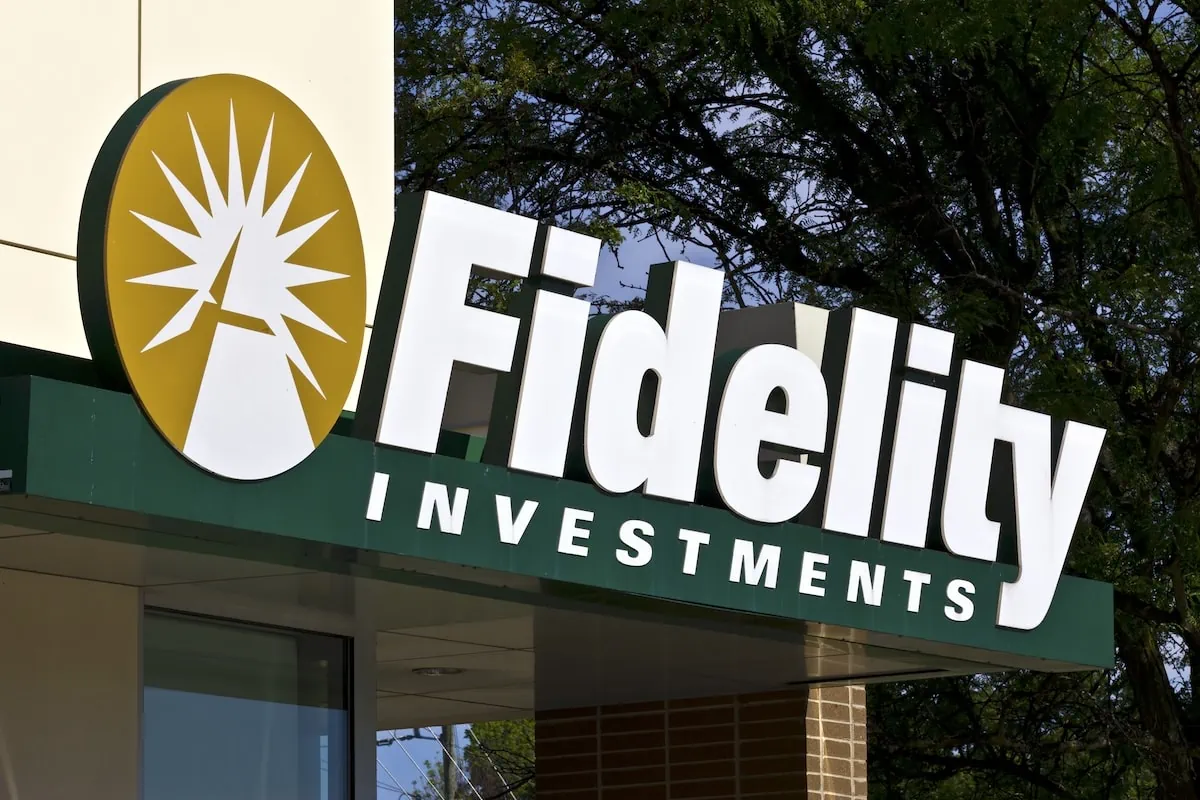
If you’re looking to build a diversified, low-cost portfolio of funds, Fidelity’s got a great lineup of ETFs that you need to see.
In addition to the greatest hits offered by most fund providers (e.g., S&P 500 index fund, total market index funds, and the like), they also offer specific funds that cover very niche investment ideas you might want to explore.
Related: Best Target-Date Funds: Vanguard vs. Schwab vs. Fidelity

Looking to simplify your retirement investing? Target-date funds are a great way to pick one fund that aligns with when you plan to retire and then contribute to it for life. These are some of the best funds to own for retirement if you don’t want to make any investment decisions on a regular basis.
We provide an overview of how these funds work, who they’re best for, and then compare the offerings of three leading fund providers: Vanguard, Schwab, and Fidelity.
Related: 9 Best Monthly Dividend Stocks for Frequent, Regular Income
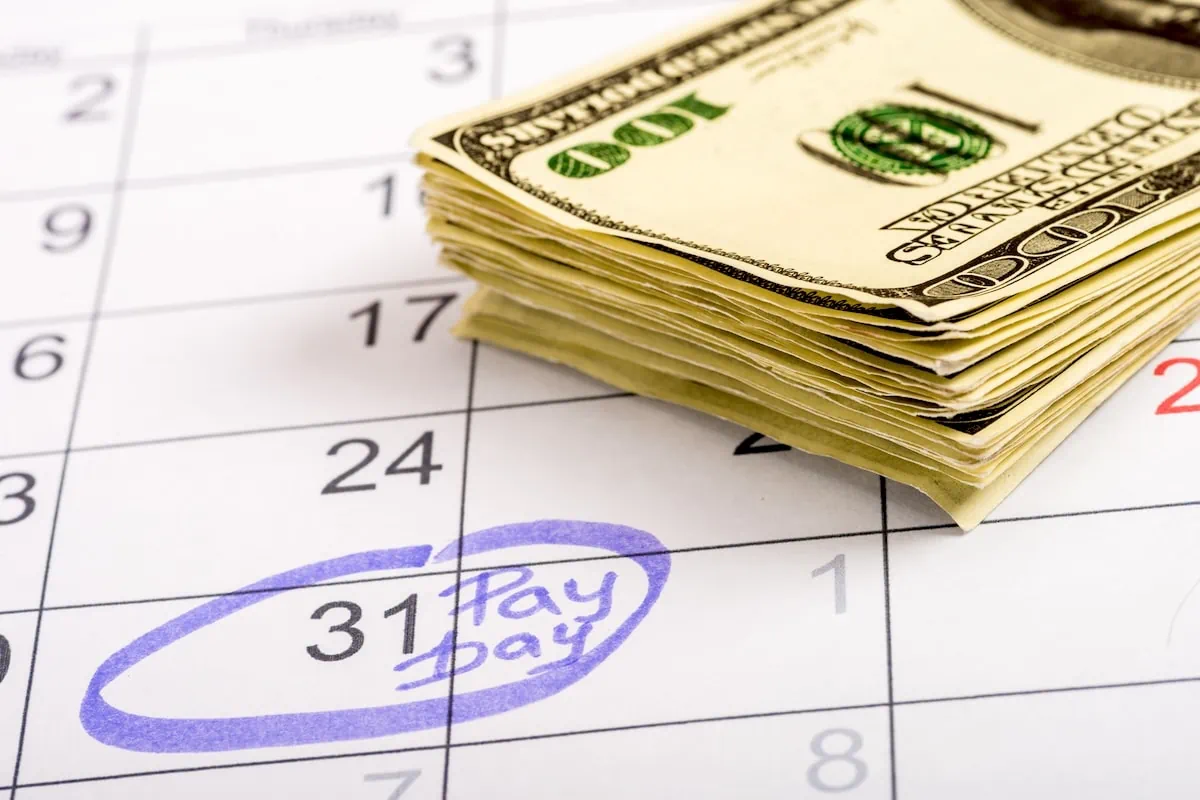
The vast majority of American dividend stocks pay regular, reliable payouts—and they do so at a more frequent clip (quarterly) than dividend stocks in most other countries (typically every six months or year).
Still, if you’ve ever thought to yourself, “it’d sure be nice to collect these dividends more often,” you don’t have to look far. While they’re not terribly common, American exchanges boast dozens of monthly dividend stocks.
Please Don’t Forget to Like, Follow and Comment

Did you find this article helpful? We’d love to hear your thoughts! Leave a comment with the box on the left-hand side of the screen and share your thoughts.
Also, do you want to stay up-to-date on our latest content?
1. Follow us by clicking the [+ Follow] button above,
2. Subscribe to The Weekend Tea, our weekly newsletter to read more about investing, spending, taxes, and more, and
3. Give the article a Thumbs Up on the top-left side of the screen.
4. And lastly, if you think this information would benefit your friends and family, don’t hesitate to share it with them!





